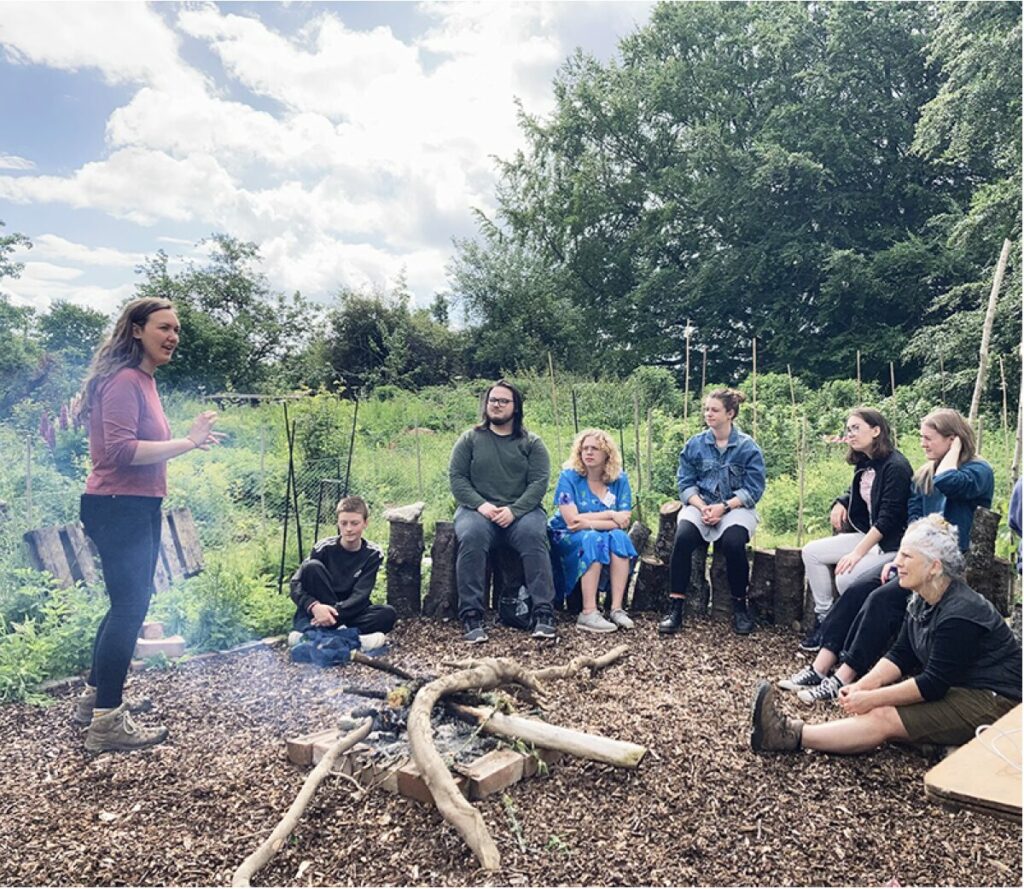I was one of two Resident Artists working with the Sidney Nolan Trust for the duration of 2022. Below is a conversation I had with the Creative Producer at the Sidney Nolan Trust, Antony Mottershead.
Antony Mottershead: The Resident Artist scheme is quite unique in that it affords you a full 12 months to work with the Trust. Can you tell me how this has influenced your journey so far?
Faith Limbrick: I think that most importantly it has allowed me to really sit with ideas, dwell on them and allow them to answer back in their own time. I came with a number of initial ideas that took time to establish and now, just over halfway through my residency, I still have room to develop these ideas even further, bring in new modes and influences and still have time to address them properly. I get to really trust the space I’m in too, and get to know it a little better. My focus can be wide and encompass more.
AM: In June you were the recipient of a Developing Your Creative Practice grant from Arts Council England. Congratulations! What are you doing with this support? And how is it impacting your work with the Trust?
FL: The DYCP funding is supporting me as a working artist while on this residency, it allows me to pay myself for the work I’m doing. It means I can schedule time for researching, making and thinking, rather than trying to fit it around other things in my life. I have also been able to purchase materials to help with making work, do research trips as well as pay other creative practitioners to work with me to further develop my ideas. In October I’ll be working with Birmingham-based artist Ania Bas on writing, walking and performances. I also have the support of a coach, who I speak to every month. So I feel bolstered and assisted on many different sides of my practice, which means I can take risks and push my own boundaries.
AM: I am really interested in the coaching that you are using to support your work and you’ve also developed a network of critical friends inc. artists, producers and curators who you are inviting for conversations. So many artists, particularly emerging artists can find themselves quite isolated, can you explain how you are using this network?
FL: I’ve had coaching sessions from The Hour (Relational Dynamics First trained coaches) once a month since the start of the residency. I chose coaching because I like how it’s self-led; the coaching process makes space to really dig down deep into my practice. I also trained as an RD1st coach in 2018 and I know that the framework behind coaching works well for me. I use it to really push and question my thought processes.
It’s difficult being isolated, especially if you are establishing your practice, and perhaps even more if you are rurally located. I’ve been inviting people to come and talk with me about the work I have been doing in the spaces I have made. These are my first steps in building that network of friends in the area. These mutual exchanges, conversations and relationships all go towards finding your feet in a new place and developing sustainable practice beyond the term of the residency.
AM: I know from our regular discussions that your inputs and outputs are very broad, and your practice is engaged with a wide range of ideas and types of making. Can you tell us a bit about this way of working and is there something that unifies these approaches?
FL: I go where the idea takes me. Sometimes it’s writing, other times it’s a film. It can be a performance, sculpture or audio work. At the moment it’s making a garden (or the outdoor studio as I like to call it). All these elements are like pieces of a collage; they are unified when looked at as a whole. They form different parts of a universe, I trust that even if something seems disparate that it forms part of this whole. I’m interested in allowing in a combination of many different things, like a Surrealist collage, which makes a narrative as they interact with one another. It’s about the live-ness of the thing, that the objects and work I make can carry on a conversation which bubbles away whether I’m there or not.
AM: One conceptual pillar of your practice is UBST. Can you explain this concept and when and how did it develop?
FL: The UBST stands for untutored builders of space and time. It is a framework for building a relationship with the land. The whole idea has clicked into place whilst being at The Rodd, having been on the back burner since I began it at Art College in 2011. It hasn’t had much life since then, but linking it with land practice has reignited its purpose and I’m very excited to develop it. It’s about using the knowledge you already have to approach the land or outside space. It’s about re-learning the land around you. It’s about looking at the future with some hope of understanding what is happening around you.
AM: Despite living and studying art in Edinburgh, your practice is increasingly engaged with rurality, with natural materials and growing. Has this naturally developed with your locating to Shropshire or has it been in part a very conscious decision?
FL: I think it is a combination of the two. I very purposefully made a move to a rural location at the end of 2020, that was because I wanted to learn practical skills in the land, (it’s quite easy to have ideals in a city but not be able to actually practice many of them). So when I began my residency I set out to make a space outside, to see where this might lead. I make an income by helping people with their gardens and land – this has come about more naturally as a result of my first job here being through a friend of a friend where I helped on a small holding.
I don’t know much about rurality or even plants or the land. As the writer John Stewart Collis admits, “my approach is one of genuine ignorance”, but this statement also embodies the basic principles of the untutored builders of space and time. How else is one to approach anyway? It’s unsatisfactory in that you can make a lot of mistakes, but it’s good because I can see things another way, I have a different vantage point.
AM: As your year at The Rodd moves into the Autumn, can you give us a sense of what you are working towards?
FL: I have spent the first half of my residency gathering. As we move into Autumn I will also move into a different mode. I will be spending my time solidifying ideas, bringing them down from an imaginative space, and translating them so they can exist in this world as objects, films, writing, drawings, performances and however else they will be.

© Faith Limbrick 2024
